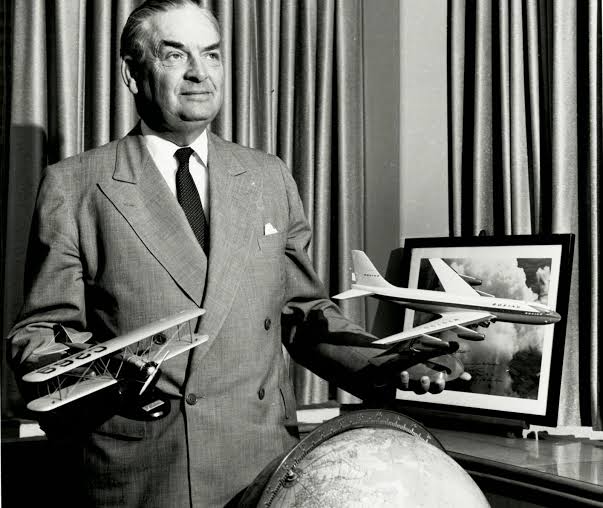Claire Egtvedt, early Boeing Engineer
Clairmont “Claire” Egtvedt was born on a farm just outside
of Stoughton on October 18th, 1892 and is known as one of the
airplane designers of the B-17 bomber.
He graduated class of 1912 from Stoughton High School where he played basketball, was a
track champion and the 1911 Junior Editor of the Yahara.
“Hired by William E. Boeing as a draftman straight out of
the University of Washington College of Engineering in 1917. Egtvedt’s ability became immediately apparent
to Bill Boeing, who would recollect that Egvedt 'took to the aircraft engineering
very readily'. He rose quickly, becoming
chief engineer by the early 1920s.”
“Egtvedt knew the importance of developing new products, not
just from a business standpoint, but from a technical proficiency
standpoint. Egtvedt confronted Boeing,
declaring, “We are building airplanes, not cement sidewalks! Egtvedt convinced
Boeing that he had to allow his engineering staff to start designing airplanes
again.
A year later, the highly
successful Boeing PW-9 fighter first flew.
A whole family of successful fighters followed, along with Boeing’s
first commercial airliners the Model 40 mailplane and subsequent Model 80
airliner.
After becoming the company’s vice president in 1926, Egtvedt
continued to push the company’s airplane designs forward, helping define the
figuration of the seminal Model 247.”
“At Egtvedt’s direction, the company invested its limited
resources into projects such as the B-17, Boeing 307 Stratoliner, Boeing 314
Clipper, paving the way for Boeing to become the premier manufacturer of large
airplanes.
For his role in creating the
XB-15 and B-17 bombers, Egtvedt is often referred to as “Father of the Four
Engine Bomber”. He was named chairman of the Boeing Airplane Company in 1935
and remained in this role until his retirement in 1966 (at the age of 74).
“Under his stewardship as chairman, Boeing
embarked on the sequence of airplane development that has come to define the
company: the B-29, B-47, B-52, and finally the first of the 7-series of jets,
the 707, 727, and 737.”
Excerpts from Wikipedia:
Claire Egtvedt
Please see Wikipedia for their list of References.
“Company historians say he would go
up in those frail planes with a sheaf of paper strapped to his leg and take
notes on air speed,oil pressure, rate of climb, etc. He worked long hours and there was plenty of
excitement.”
“In 1926 he was named vice
president – general manager and in 1933 he became president. In 1939, P.G. Johnson became president of
Boeing and Mr. Egtvedt was elected chairman, devoting his time to development
on the B-17.”
Excerpts from the Stoughton Hub,
November 3rd, 1975

From a New York Times obituary:
"Working in secret on Mr. Egtvedt's
“design number 299,” Boeing engineers and craftsmen succeeded in turning out an
armored four‐engine bomber that met
Mr. Egtvedt's specifications —fast, long range, and powerful enough
to carry heavy bomb loads on a steady, accurate bomb run.
The plane shattered a
speed record in flying to Dayton, Ohio, air show where other bombers were
competing for an Army contract.
The resulting series of
B‐17's, which became what
Gen. Henry H. Arnold, chief of the Army Air Forces, called “the guts and backbone of
our worldwide aerial offensive,” in World War II, served as a virtual
symbol of the nation's ability to strike back at the enemy after Pearl Harbor.
They
sank battleships while the United States was still reeling from surprise attack
and they devastated German industry before the Allies could mount a
counterinvasion.
At
home, war bonds were sold with the pitch, “Help Buy a Flying Fortress.”
Boeing's Seattle production force, 45 per cent women, worked under banners
proclaiming them “Builders of Victory,” and Mr. Egtvedt, the “father of the
Flying Fortress,” became a reluctant hero who shied from the limelight.
Claire Egtvedt of Boeing, Developer of B‐17, Is Dead
By Robert Mcg. Thomas Jr. Oct. 21, 1975 New York Times archives
Clairmont L. Egtvedt was inducted into the Wisconsin Aviation Hall of Fame in 1996, click here